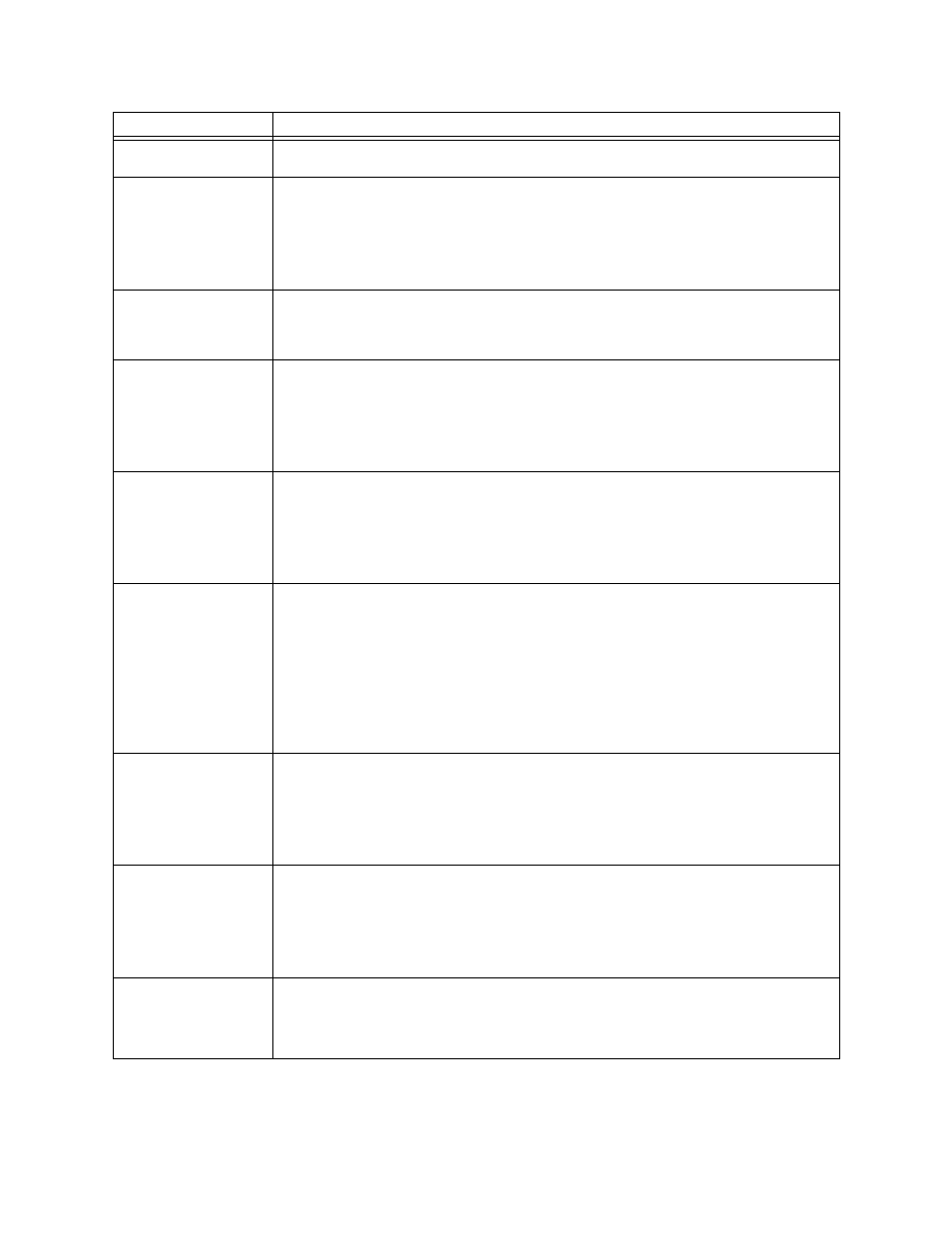Verilink QUAD/IMUX (880-502392-001) Product Manual User Manual
Page 51

E1 Configuration Menus
Verilink QUAD/IMUX User Manual
3-13
F
Ref Clk Phase—Selects or displays the status of the reference clock phase. Valid
choices are Normal and Inverted.
H
DTE Handshake—Selects the control lead mode. If manual mode is selected, each
control lead must be forced ON or else it will be forced OFF. If manual mode is
selected DSR must be forced on or no user data will be sent.
In Automatic DTE handshake mode each lead will be asserted in accordance with
the state of the complimentary lead. In automatic mode DSR is output high and
user data is sent only if the DTE asserts DTR.
—
DTE Type—Indicates which type of rear connector module (CIM) has been
detected. This field might display HSSI, V.35, EIA 530, EIA 530A, or RS-449. If this
field says NONE then either the front and rear cards have not seated together
properly or a hardware problem exists.
Q1
QUAD Card 1—The Q1 command is used to select which ports on the first QUAD
2164 card will be used to carry traffic for this IMUX 2160 module. If the IMUX
2160 is to use all of the ports on the first QUAD 2164 module type “Q1” and
press
E
NTER
.
At the second prompt enter "1,2,3,4".
In any QUAD/IMUX installation the first QUAD 2164 module must be installed in
an odd-numbered slot in the shelf.
Q2
QUAD Card 2—The Q2 command is used to select which ports on an (optional)
second QUAD 2164 card will be used to carry traffic for this IMUX 2160 module.
If the IMUX is to use all of the ports on the second QUAD 2164 module type “Q2”
and press
E
NTER
. At the second prompt enter "1,2,3, 4".
Whenever a second QUAD 2164 module is used in a QUAD/IMUX installation, it
must be installed in an even-numbered slot.
1
DSR—In Manual mode, this field is used to FORCE Data Set Ready (DSR) on or to
force DSR off. Since DSR must be YES for data to be sent, it is never desirable to
select Manual for DTE handshake and fail to force DSR on.
In Automatic DTE handshake mode this field indicates the current state of Data
Set Ready (DTR). “Yes” indicates the lead is asserted or high, “No” indicates the
lead is not asserted or low.
If DSR is not asserted, no data is sent. If the DTE does not assert DTR, then the
IMUX does not return DSR and no data is sent unless DTE Handshake is set to
MANUAL and DSR is then forced ON by selecting "Yes".
2
CTS—In Manual DTE Handshake mode, this field is used to FORCE the Clear to
Send signal on, or to force the CTS lead to be off at all times. In manual DTE
Handshake mode, if this lead is not forced on, it is forced off.
In Automatic DTE handshake mode this field becomes an indicator of the status
of the CTS lead. Unless the IMUX is out of sync with the far end IMUX, CTS should
follow Request To Send (RTS).
3
DCD—In Automatic DTE handshake mode this field becomes an indicator of the
status of the Data Carrier Detect (DCD) lead. "Yes" means DCD is being asserted
by the IMUX. "No" means the IMUX is currently outputting a low on DCD, turning
it off.
In Manual DTE Handshake mode, this field is used to FORCE the DCD lead on or
force the DCD lead off. It is never advantageous to force DCD off at all times.
4
RI—Not Available with this product.
RI stands for Ring Indicator. Ring Indicator is used on POTS (Plain Old Telephone
Service) switched network modems to indicate that the telephone line is ringing
because of an incoming telephone call.
Command/Field
Description
